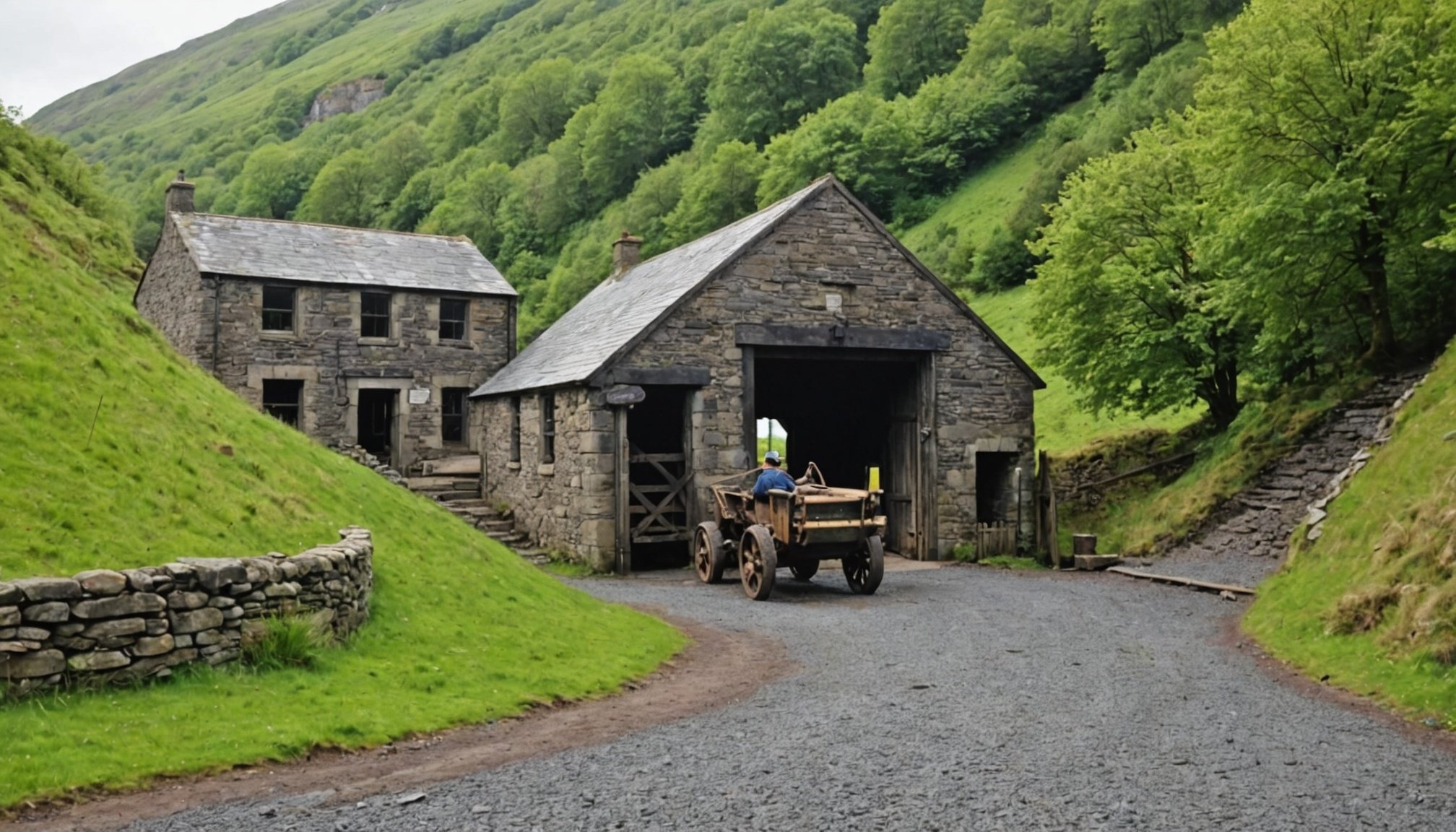Overview of Wales’ Mining History
Wales boasts a rich mining history that significantly shaped its culture and economy. During the Industrial Revolution, Wales became a vital hub for mineral extraction, profoundly impacting the region and the world. The country’s abundant coal deposits catered to the growing demand for industrial energy, propelling Wales into a new era of prosperity.
The core of Wales mining history lies in the variety of resources extracted, including iron ore, copper, lead, zinc, and especially coal. These minerals played a pivotal role not only in local development but also in powering the broader industrial processes. Coal, in particular, emerged as a cornerstone for energy production, fuelling factories and transport systems globally.
Also read : Uncover premier locations for genuine scottish music and dance experiences in the highlands
Mining greatly influenced the economy and local communities, providing employment opportunities and fostering urban growth. However, it also imposed social challenges, including worker safety, environmental impacts, and shifts in local demographics. Communities often revolved around these industries, forging a robust cultural identity tied closely to the mining heritage. As these industries declined, their legacy persisted, continuously shaping contemporary Welsh society and contributing to the vibrant industrial heritage celebrated today.
Must-Visit Historic Mining Sites in Wales
Wales harbours numerous historic mining sites that encapsulate its rich industrial heritage. These destinations offer a vivid glimpse into the past, perfect for enthusiasts keen to explore.
Also to see : Discover the legendary hadrian”s wall: embark on an unforgettable guided tour!
Big Pit National Coal Museum
One standout site is the Big Pit National Coal Museum, a cornerstone in preserving mining history. As a former working coal mine, it provides authentic underground tours led by ex-miners, offering firsthand stories and insights into the lives of miners. Accessible year-round, it caters to different visitor needs, including accessible paths for those with mobility challenges.
Rhondda Heritage Park
The Rhondda Heritage Park celebrates Wales’ coal-mining narrative through interactive exhibits. It presents an engaging underground tour reminiscent of miners’ experiences. Visitors can explore educational programmes, showcasing the importance of coal to local communities.
Llechwedd Slate Caverns
The Llechwedd Slate Caverns highlight the distinct tradition of slate mining. Tours delve into the caverns’ historical depths, providing insights into the industry’s influence on Welsh culture. These caverns connect deeply with local traditions, reflecting the community’s relationship with slate.
Each site serves as a testament to Wales’ industrious past, offering unique experiences reflecting its mining heritage.
Understanding the Legacy of Mining in Wales
The mining legacy in Wales is deeply intertwined with its cultural heritage and has left an indelible mark on the community impact across generations. Mining has significantly influenced Welsh identity, shaping community structures and fostering a unique industrial spirit that persists today. This industry didn’t just extract resources; it built communities with its own shared traditions and stories.
As mining industries receded, their legacy didn’t vanish. Instead, it shifted, continuing to influence contemporary Wales in varied ways, from cultural festivals to educational programs celebrating the nation’s industrial past. Initiatives such as community projects and historical exhibitions actively seek to preserve this cultural heritage, ensuring future generations understand its importance.
Efforts to promote and commemorate the mining legacy involve local museums, heritage organizations, and cultural festivals, all contributing to a cohesive narrative that honours the past. Community-driven projects often highlight personal histories, showcasing how mining has shaped individual and familial identities. These initiatives underscore the interconnectedness of Welsh communities, bridging the past with the present, and exemplifying how mining has continually sculpted the social fabric of Wales. Through these ongoing efforts, Wales keeps its mining heritage alive and relevant.
Planning Your Visit to Mining Heritage Sites
Exploring Wales’ mining heritage sites offers a journey through time, providing visitors an immersive experience into the country’s industrious past. To ensure a memorable trip, here are some essential tips for planning your visit.
General Travel Tips
When visiting Wales’ mining sites, it’s best to plan your trip during the spring or summer months, as the weather is favourable and attractions are often fully operational. To make the most of your visit, consider purchasing tickets in advance for guided tours and special exhibitions.
Transportation Options
Visiting multiple sites can be made easier with a personal vehicle, granting flexibility in your itinerary. However, public transport is also a viable option, with buses and trains connecting many historic mining locations. Trains and local bus services can take you to key locations, such as the Rhondda Heritage Park and Llechwedd Slate Caverns.
Accessibility Considerations
Most mining museums and sites in Wales prioritize accessibility to accommodate various needs. The Big Pit National Coal Museum and Rhondda Heritage Park offer accessible paths and facilities for visitors with mobility challenges. It’s advisable to check each site’s specific accommodations and contact them ahead of your visit if you have particular requirements.
Additional Resources and Reading
Exploring additional resources and reading about Wales’ mining history offers deeper insights into its industrial heritage. This curated list of historical resources provides a thorough understanding suitable for enthusiasts and scholars alike.
Recommended Books and Documentaries
- Books: “Coal House” provides an intimate look at Welsh mining families, while “The Welsh Miner” explores the broader socio-economic impacts.
- Documentaries: “The Merthyr Tydfil Coalfield” covers historical aspects, and “Miners of Wales” provides personal accounts from former miners, enriching your knowledge about mining legacy.
Online Resources and Virtual Tours
- Online Resources: The BBC Wales History site offers numerous articles devoted to Wales’ mining heritage and virtual archives.
- Virtual Tours: Explore sites like the Big Pit National Coal Museum virtually, browsing exhibits that might pique interest before visiting in person.
Local Tours and Guided Experiences
To dive deeper, join guided tours curated by local historians offering personal insights and educational insights. For a unique experience, consider the guided tours at Llechwedd Slate Caverns, connecting past Welsh traditions to contemporary culture through interactive exhibits.










